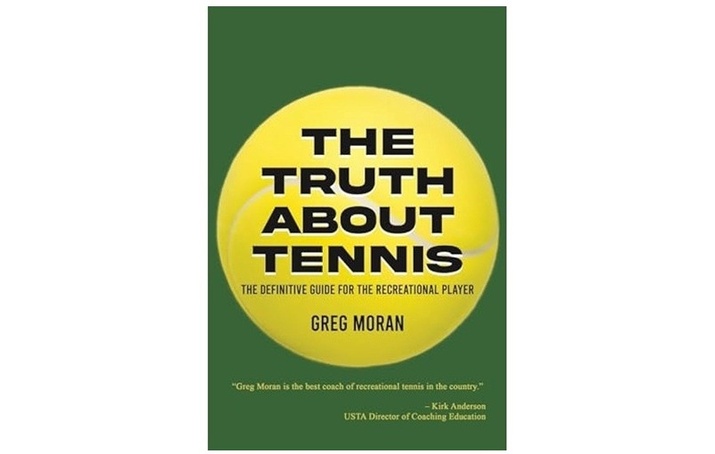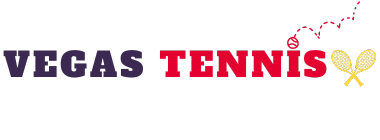Exciting news for tennis enthusiasts! Greg Moran, a seasoned contributing writer for Tennis View, has just released his latest book, “The Truth About Tennis: The Definitive Guide for the Recreational Player”, now available on Amazon.
This guide is tailored specifically for the countless recreational players worldwide. Celebrated as the “Best coach of recreational players in the country,” Greg brings over 50 years of experience to the table. With more than 100,000 hours spent on the court, he has mentored thousands of players ranging from ages 3 to 93. His vast experience has equipped him with the knowledge of what truly works in tennis—and equally, what doesn’t.
Stay tuned! Over the next 5 issues, we’ll be sharing exclusive excerpts from Greg’s bestseller. As a special giveaway for Tennis View readers, the first ten individuals to reach out will receive a complimentary copy of The Truth About Tennis (U.S. only). You can contact Greg directly at Gmfsrc@optimum.net.

Part One: Playing High-Percentage Doubles
When it comes to playing successful doubles, two components are crucial: positioning and shot selection. Which formations will give your team the best odds of winning each point? And from those formations, what are the optimal shots to use?
Positioning
At the 4.0 level and beyond, the team that dominates the net wins points an impressive 85% of the time. Here’s why:
1. For many players, volleys are significantly easier to execute than groundstrokes. Groundstrokes demand more preparation, longer swings, and precise timing and movement. On the contrary, volleys require only that you transition from a ready position, take a couple of steps, and push the racket forward with minimal follow-through. If two players of equal ability exchange groundstrokes and volleys, it’s usually the baseliner who falters first.
In doubles, a primary goal is to make your opponents hit the ball upwards, allowing you to respond with a powerful shot downward. This means that at the right moment, you can effectively end the point by driving a volley at their feet or targeting the center of the court. From the baseline, you can’t deliver that downward pressure.
Thus, the two-player formation at the net is indeed the most effective. However, winning with this strategy requires excellent movement and solid volleying skills. You also need to anticipate lobs and drives while executing overheads reliably. These skills take time to cultivate, and your current level will determine your success with this formation.
For teams at the 3.5 level and below, the one-up, one-back formation often provides a higher likelihood of success. Embrace this strategy for now; if you aim to progress to the 4.0 level, dedicate ample practice to developing your net game.
Shot Selection
While creating angles may help at lower levels (where players often don’t cover their side of the court effectively) and in senior tennis (characterized by slower movements), at a competitive doubles level, points are mostly won by targeting three key areas:
Down the Center
Hitting down the middle is a masterstroke in doubles, often leading to confusion among opponents. There’s nothing quite like seeing the baffled expressions of your opponents as your shot sails untouched between them.
In targeting the center, your opponents figure out their own angles, which is no easy task. Moreover, even a less-than-perfect hit down the middle is likely to stay in play, while aiming for tricky angles may land you an error instead.
At Their Feet
Focus on making shots that your opponents can’t easily return rather than those they can’t touch at all. I’ve lost count of how many times I’ve witnessed players miss simple volleys by trying to avoid their opponent instead of directing the shot to their feet.
Forget about ‘keeping it away’—concentrate on sending the ball to challenging spots around their body (feet and hips) to force mistakes. If they manage to return it, you’ll most likely get a straightforward shot you can attack.
Over Their Heads
The lob is a tennis player’s most formidable weapon—not in terms of speed but in its strategic impact on the match. Whether you’re using it offensively to push your opponents back from the net or defensively to gain time, a well-executed lob is invaluable.
Experienced teams at the 4.0 level and above engage in long, tactical rallies rich with lobs. They appreciate that a well-timed lob is a critical component of their artillery rather than just a rogue shot.
When your opponents seize the net, and if hitting a low shot isn’t viable, opt to lob. Make them execute an overhead—a physically demanding shot that can turn the tide of the match!
In summary: Control the net, and secure points by shooting down the middle, targeting your opponent’s feet, or lobbing over them.
A Final Note: Avoid Alley Addiction
Trying for the alley is often one of the lowest percentage options in doubles. Consider this:
The alley spans only 54 inches wide, and the net is taller at the ends than in the center. Stand at the baseline, and try to hit ten shots aimed at the alley. You’ll quickly discover how challenging this can be.
Attempting to hit the alley, you often need to adjust ball direction, which is no small feat. And if you fall short, you hand your opponents easy opportunities—they can volley down the middle or target your partner.
Only hit to the alley in a few specific situations: if an opponent leaves it wide, if they are not volleying well, or if they are actively poaching.
At the 4.0 level and beyond, these scenarios become increasingly rare. Experienced players know how to cover their alleys and are adept at volleying. Take a moment to observe; if your opponent isn’t covering their alley, go for it! If they are, return the ball cross-court and keep the rally alive.
In high-level doubles play, only target the alley when the net player is poaching. Occasionally aiming for the alley or body shot can keep them on their toes.
This rewritten content retains the original HTML structure while providing a unique and attractive take on the information outlined in the original text.




